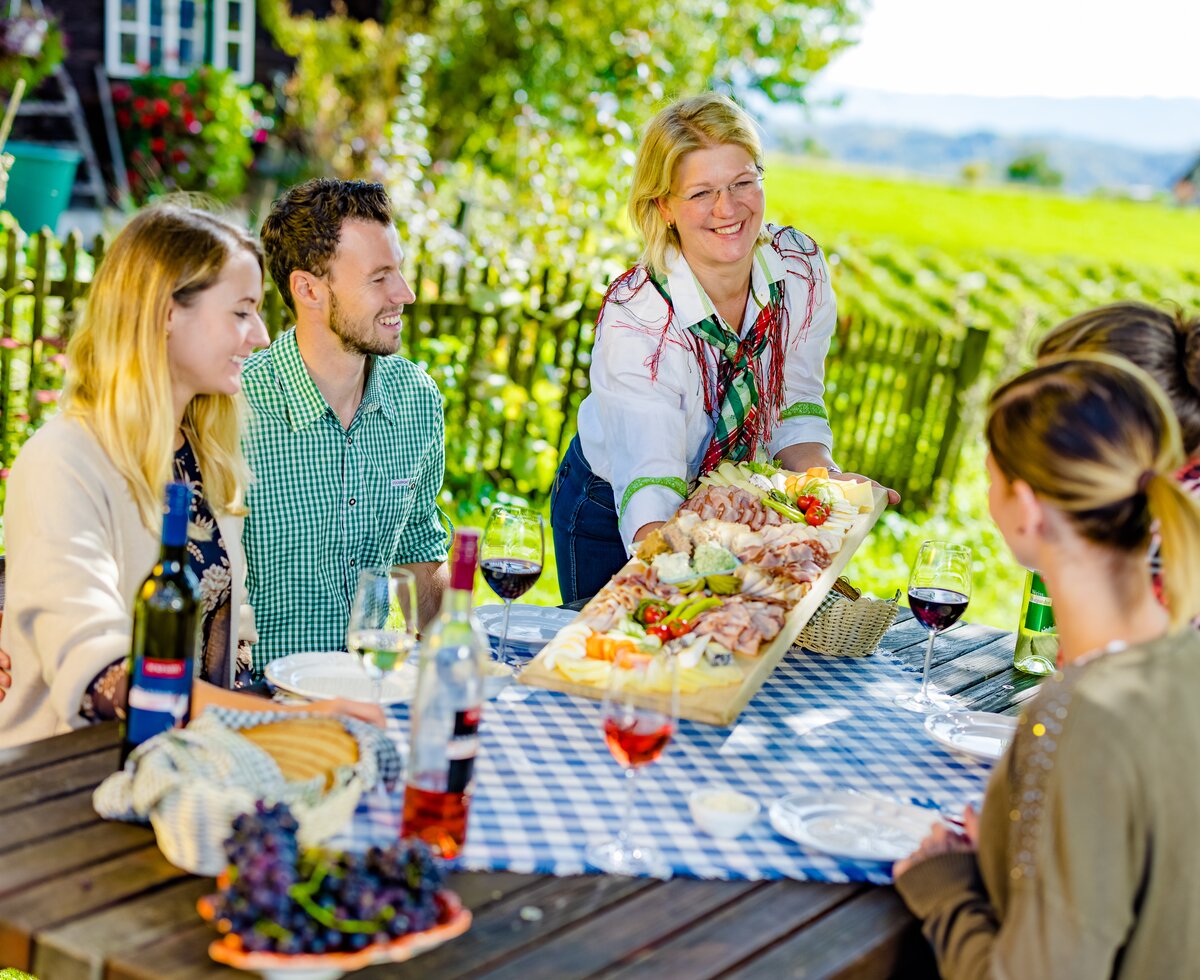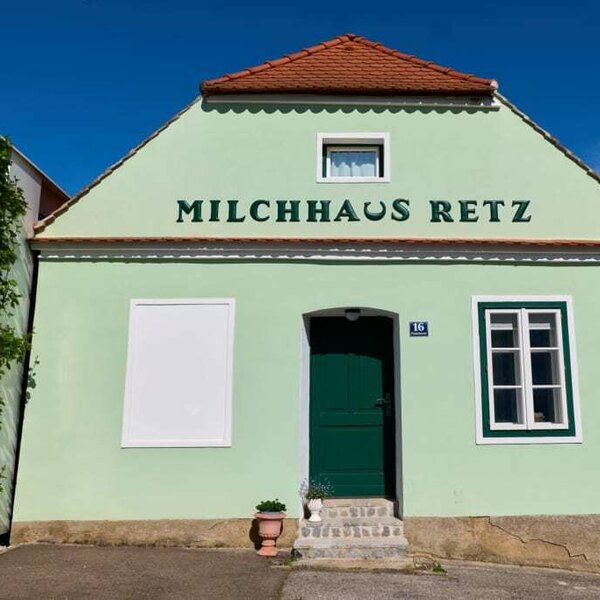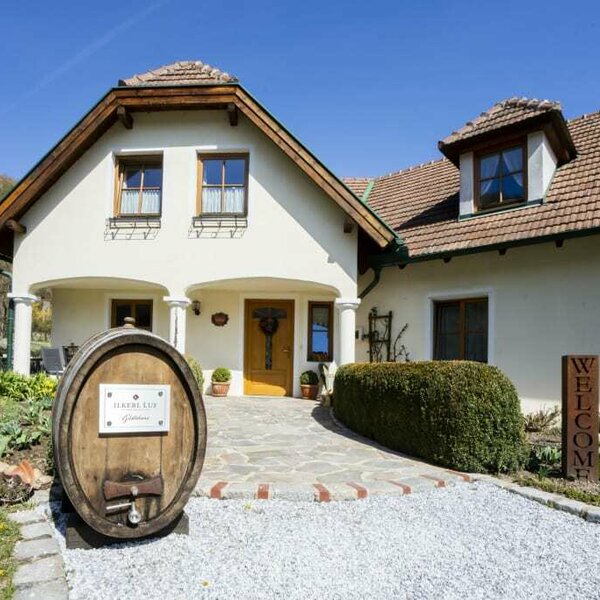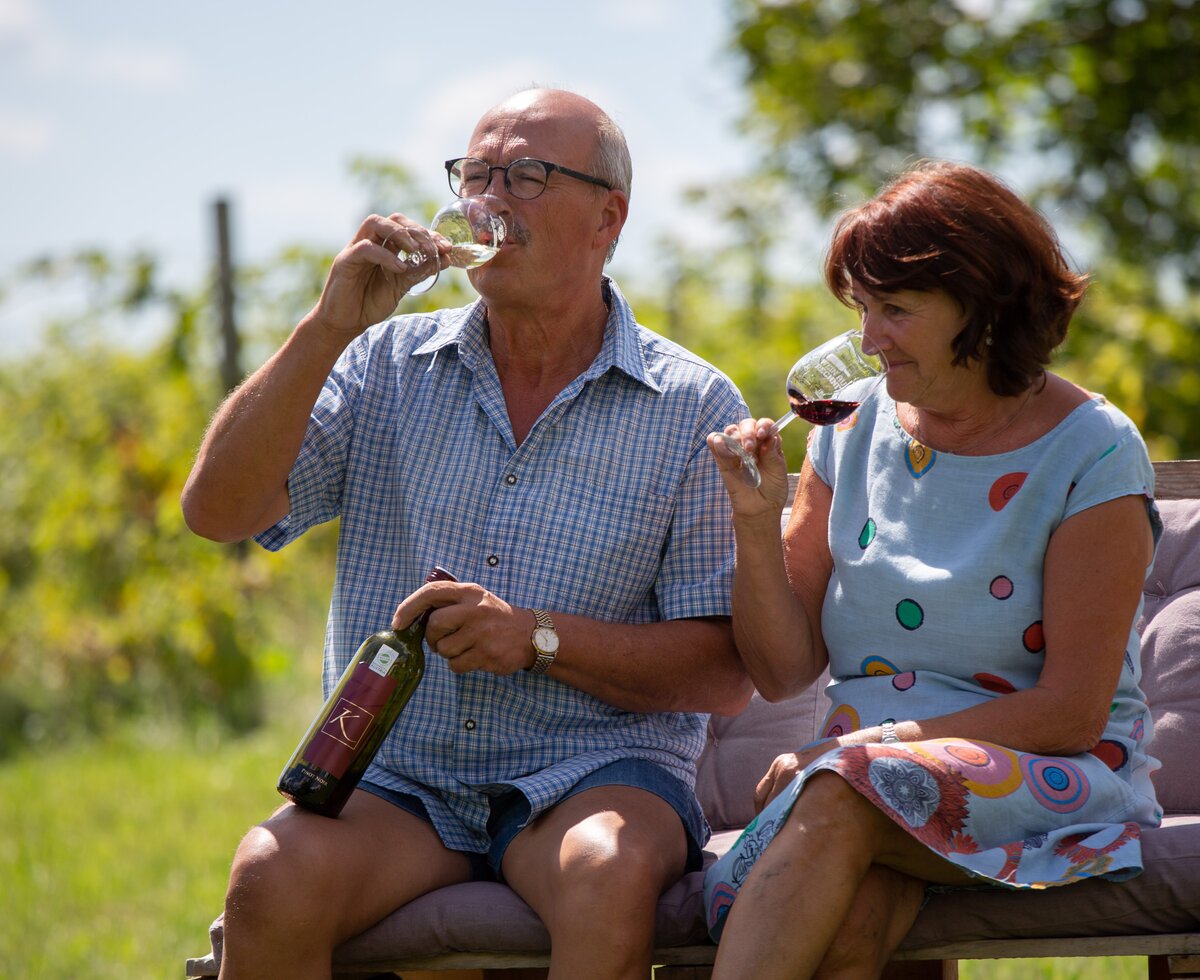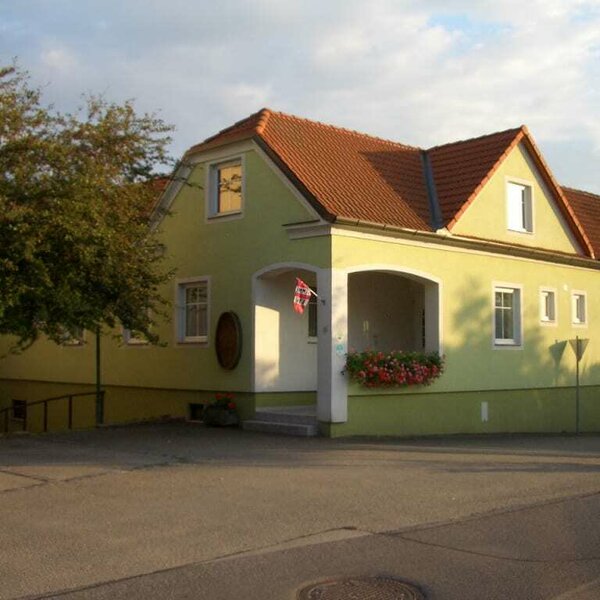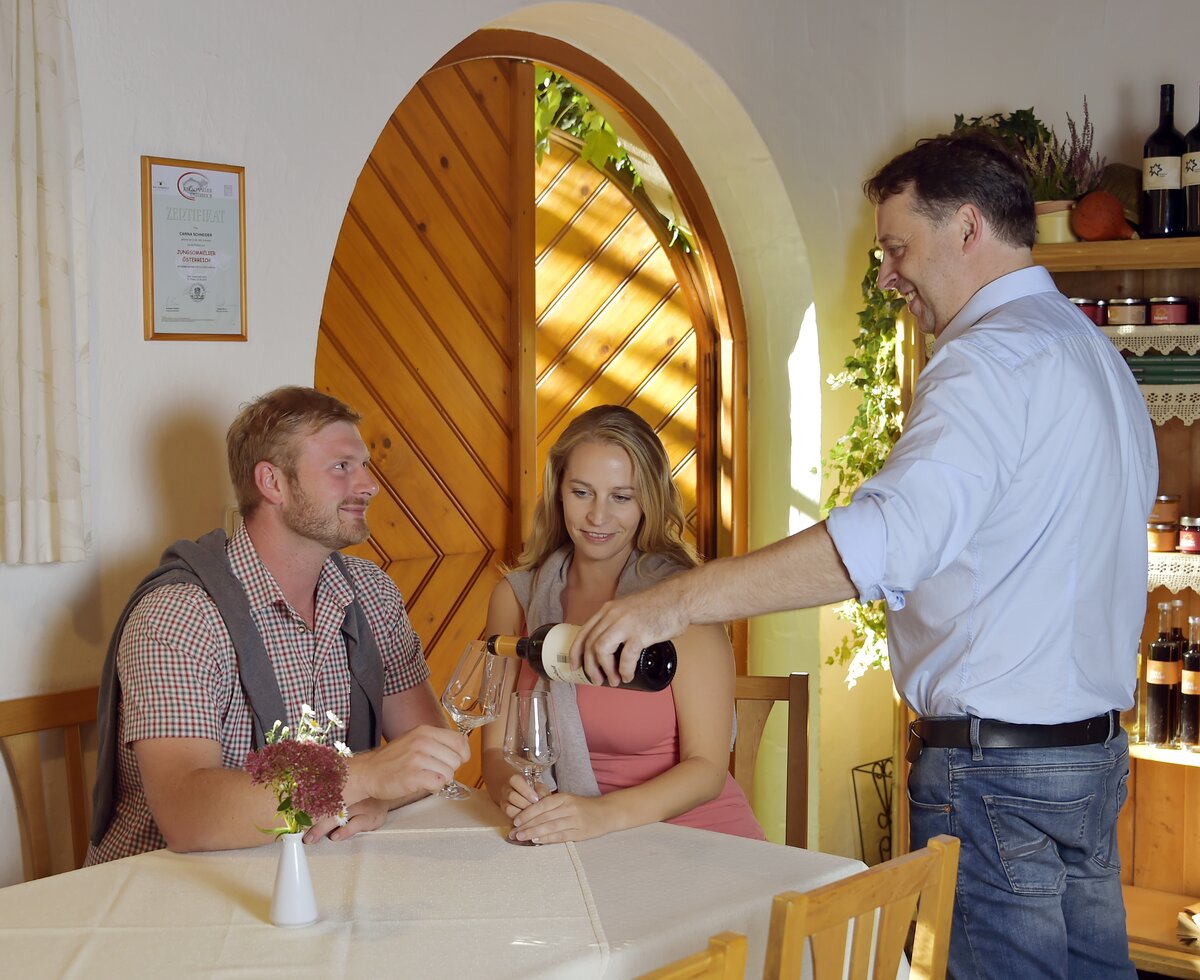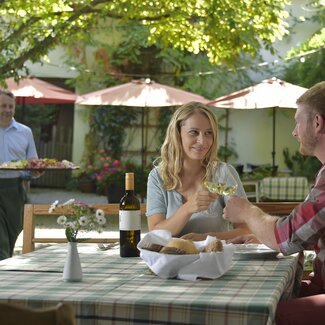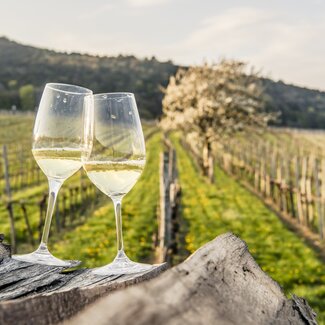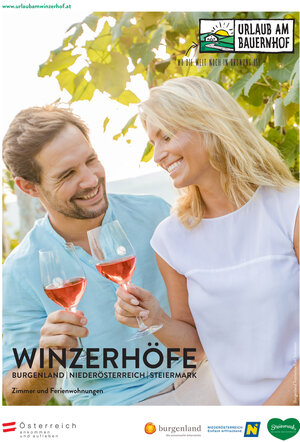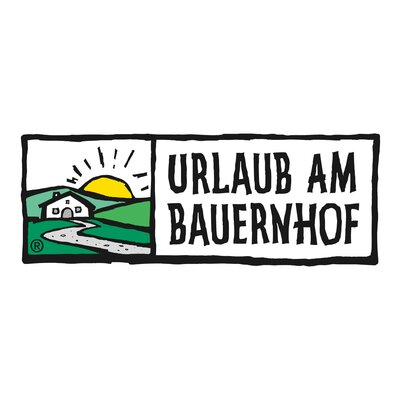Buschenschank & Heuriger
Traditional Wine Taverns in Lower Austria
“Buschenschank” and “Heuriger” - both terms are used for traditional wine taverns found in rural areas throughout Austria.
Today, they would probably be called regional pop-up restaurants. However, these taverns are part of a long-standing tradition in Austria. In 1784, Austrian Emperor Joseph II issued a decree that permitted all residents to serve self-produced wine and cold food in establishments called “Buschenschank”. “Heuriger”, actually an abbreviation of “heuriger Wein” (this year’s wine), is the name of this year’s vintage as well as the tavern itself.
Depending on the region, different food is served. A buffet-style snack is typical for the taverns in Vienna and surroundings, whereas in other areas, you can choose wine and home-made dishes from the menu. All-time classics: “Brettljause”, a savoury snack platter featuring different types of meat, cheese and spreads, as well as slices of bread with hearty toppings.
Come In, We’re Open!
Let’s Sit Down in a “Heuriger”
Wine and food are a perfect match. A great food and wine pairing creates a balance between the components of a dish and the characteristics of a wine. The basic rules are simple to grasp. The wine should have the same flavour intensity as the food (it shouldn’t be more intense). The most important thing to consider: It has to taste good!
The traditional “Heurige” are usually only open for a few weeks a year. How can you tell which wine tavern is open? That’s easy! It’s customary to attach an elaborately decorated bouquet made from brushwood or straw and a lamp at the entrance. It guides the way to the taverns that open their doors to guests. Welcome!
DO YOU ACTUALLY KNOW HOW NICE IT IS HERE?
It all started as a hobby. Today, it’s a successful family-run farm featuring wine tavern, farm shop, accommodation for guests and vineyard. The Way of St. James (Camino de Santiago) goes through the vineyard, lined by grapes. A lot of hikers and pilgrims stop by and enjoy culinary delights that unite the past, the present and the future on the plate. Doris and Ernst Winkler found what they’ve been looking for at their home. Now it’s their life: The farm & vineyard “Traubenhof Winkler” in Lower Austria.
Quality & Trust
Warm-hearted
Your relaxing holiday focusing on nature and indulgence
Culinary delights
Wine and more -
home-made, of course
Simply on holiday
Getting away from the daily routine, embarking on an adventure
A Guide to Wine Tasting
Take Your Time and Challenge Your Senses
For most winegrowers, it’s a must to offer tutored tasting sessions during a vineyard stay. In most cases, they are held in spectacular tasting rooms. You can be sure to learn something from an expert! If you try different wines, don’t forget to take notes. By doing so, you’ll easily remember the wines you loved. After all, you need to know which ones to take home.
But now it’s time to start! Six to eight centilitres of wine are poured into a glass. It’s important to hold the wine glass by the stem in order to avoid transferring body heat to the wine itself. The three steps in a wine tasting:
See: The colour of the wine is very important. “The older the wine, the lighter the colour” goes for reds whereas white wines darken with age. More intensity of colour generally corresponds with a more intense taste.
Smell: Next, swirl the glass in order to release the aromas. Lower your nose close to the rim of the glass and inhale the wine deeply several times. Discover the aromas and scents from fruity to floral and mineral notes.
Taste: In order to aerate the wine and open up the full taste, you should slurp and then chew the wine. As you’re tasting the wine, try to assess its aromas and consistency.
5 Tips for Pairing Wine & Food
You Don’t Need to Be a Wine Connoisseur for a Great Food and Wine Pairing
26 white and 14 red varieties are grown throughout Austria, from Grüner Veltliner with its distinctive peppery notes to full-bodied Blaufränkisch. It’s a tough choice! We’ve gathered some basic rules that will make it easier for you to choose the perfect wine to go with your favourite dish. We don’t want you to miss out on an amazing wine experience!
- Start with something light and refreshing as an aperitif. In the course of the evening, you can go from lighter to heavier wines.
- Mind the flavour intensity of both, food and wine. Light-bodied wines go well with light dishes. Have a glass of full-bodied wine with rich, aromatic dishes. A great food and wine pairing creates a balance between the components of a dish and the characteristics of a wine.
- Light-intensity meats or fish usually pair best with white wines. Choose a full-bodied red wine with red meat.
- The waiters and waitresses in the wine taverns will always be happy to recommend the ideal wine to pair with your food. Wine from the region is usually a good choice with locally grown food.
- The best thing is trying. If it tastes good, it’s a good match! Trust your senses and look forward to delicious surprises among the variety of wines produced in Austria.
